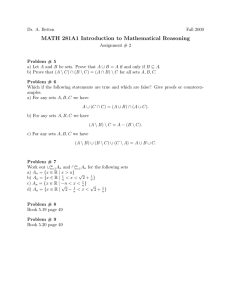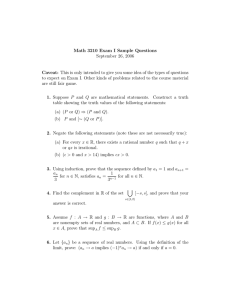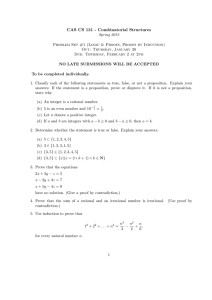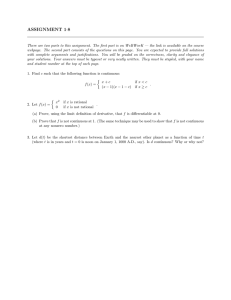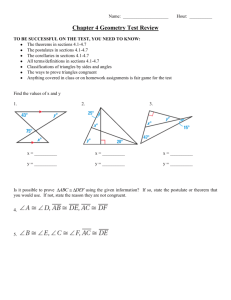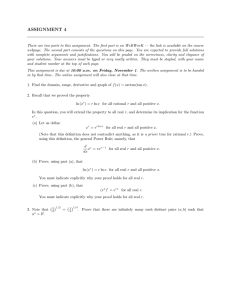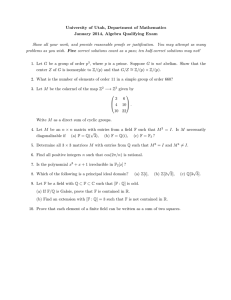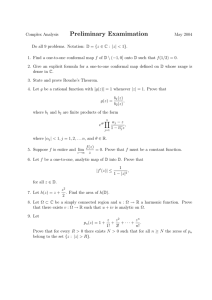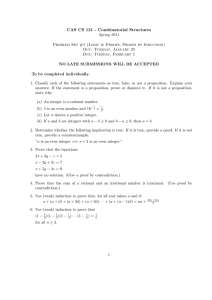Math 3210 Exam I October 2, 2006
advertisement
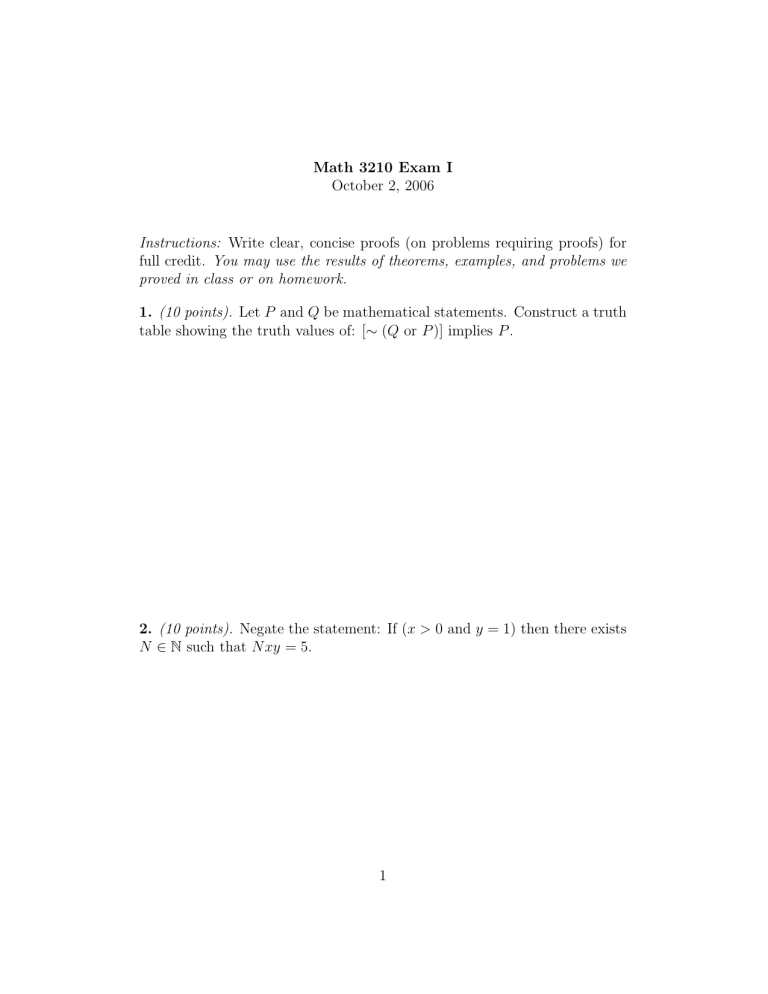
Math 3210 Exam I
October 2, 2006
Instructions: Write clear, concise proofs (on problems requiring proofs) for
full credit. You may use the results of theorems, examples, and problems we
proved in class or on homework.
1. (10 points). Let P and Q be mathematical statements. Construct a truth
table showing the truth values of: [∼ (Q or P )] implies P .
2. (10 points). Negate the statement: If (x > 0 and y = 1) then there exists
N ∈ N such that Nxy = 5.
1
3. (20 points). Assume r is a real number with 0 ≤ r < 1. Using induction,
n
X
r − r n+1
prove that
rj =
for all n ∈ N.
1−r
j=1
4. (20 points). Prove that for every real number x, there exists a sequence
{qn } of rational numbers with qn < x for all n ∈ N, and qn → x. You may
use without proof the fact (from homework) that there is a rational number
between every distinct pair of real numbers.
2
5. (20 points). Let {an } and {bn } be sequences of real numbers, with an → a.
Construct a new sequence {cn } by defining cn = bn for n = 1, . . . , 109 , and
cn = an for all n > 109 . Use the definition of the limit to prove that cn → a.
6. (20 points). Suppose f : A → B and g : B → A are both one-to-one and
onto functions. Prove that the composition g ◦ f : A → A is one-to-one and
onto.
3
